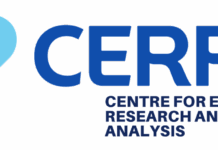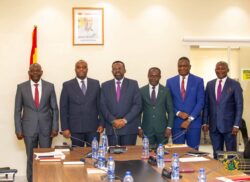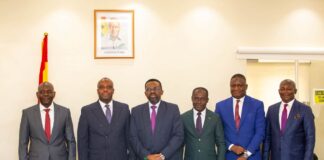Dr. Philip Takyi (Dr)
Trade-based money laundering (TBML) can occur in various sectors, but certain industries are at higher risk due to factors such as the complexity of their supply chains, high transaction volumes, and the potential for manipulation of trade documentation.
Inclusively, the article assesses mitigation factors to financial institutions serving as a pivot to the Trade-Based Money Laundering ecosystem.
High Risk Sectors to Trade-Based Money Laundering
Identifying vulnerable business sectors is crucial in proactively addressing the risks associated with trade-based money laundering and trade-based terrorist financing. The types of businesses at risk of trade-based money laundering (TBML) exploitation are varied, and various small and medium-sized companies are previously identified in different TBML schemes.
The risk indicators provided are derived from a sampling of the data received by the FATF and the Egmont Group of FIUs during the Trade-Based Money Laundering (TBML) project. The risk indicators are designed to enhance the ability of public and private entities to identify suspicious activity associated with this form of money laundering. By no means is this a conclusive list.
These sectors are not inherently involved in illicit activities, but the nature of their operations and the global movement of goods and funds make them susceptible to abuse by money launderers. Regulatory authorities, financial institutions, and businesses in these sectors must implement robust anti-money laundering (AML) measures and conduct thorough due diligence to mitigate the risks associated with TBML.
Free Trade Zones (FTZs) are also emerging as being especially vulnerable to TBML. FATF defines FTZs as ‘designated areas within countries that offer a free trade environment with a minimum level of regulation’. FinCEN has identified TBML red flags that are specific to FTZs and FTZs were the subject of a recent money laundering report by FATF (FATF 2010; FinCEN 2010). Although a country like Australia for example, does not have any FTZs, they are of general concern to Australia and Australian interests because FTZs are part of the international trade network.
The number of FTZs has rapidly increased and there are now approximately 3,000 FTZs in 135 countries (FATF 2010). In 2007, total exports from FTZs were estimated at US$400b (FATF 2010). While FTZs have existed throughout the twentieth century, the globalization of the world economy over the last few decades has seen an expansion in the number of FTZs. But FATF (2010: 3) has also observed that the liberalization of trade barriers in the FTZs has made them ‘highly attractive for illicit actors who take advantage of this relaxed oversight to launder the proceeds of crime and finance terrorism.
Mitigations of financial institutions – TBML
Back in 2006, Financial Action Task Force (FATF) emphasized on new measures and strategies for banks to combat money laundering and terrorist funding in its report on TBML. As per the report, FATF highlighted the fact that with new standards applied, other money laundering techniques are becoming more effective. And there’s a high possibility that trade based money laundering will grow more attractive. Moreover, very little attention is paid to combat the abuse of the international trade system currently.
Challenges in identifying and countering TBML exist at both the public and private sector levels, with a lack of understanding, awareness, and collaboration both domestically and internationally.
To date, the focus of anti-TBML initiatives has primarily been on TBML using merchandise, but TBML using the services trade presents a much more significant challenge. Global trade in services provides greater opportunities for money laundering than trade in merchandise because fraud is more difficult to detect and prove.
The intangible nature of services makes supply difficult to determine. Unlike merchandise, services are also less likely to be standard, so anomalies in value and price are less apparent and more difficult to substantiate. It is also common and lawful to include retainer and penalty payments which are payable even if the service is not actually supplied. While trade description fraud covers most TBML, it is not used in all TBML schemes.
Conclusion
While various jurisdictions may have different levels of preparedness for identifying and investigating TBML, the general recognition of its existence and of its future potential underscores its significance. In fact, international trade remains a viable option for movement of value even in those jurisdictions that do not have a well-developed financial or banking sector.
Thus, TBML is a concern for the international community even though it may presently impinge upon various jurisdictions without the same impact. Moreover, as the standards applied to other money laundering techniques become increasingly effective, the use of trade-based money laundering can be expected to become increasingly attractive.
In conclusion, TBML remains a significant challenge in the fight against money laundering. Ongoing efforts to enhance regulatory frameworks, promote international collaboration, leverage technology, and strengthen due diligence practices are essential to mitigating the risks associated with trade-based money laundering.
References
ADB, Asian Development Bank Manual on Countering Money Laundering and
Financing of Terrorism, 2003.
ADB, ADB Technical Assistance to Thailand, Three-Year Action Plan, November
2006.
ADB/OECD, Anti-Corruption Initiative for Asia and the Pacific, Curbing
Corruption.
Alldridge, P. (2008). Money laundering and globalization. Journal of Law and
Society, 35(4), 437–463.
AMLO, A Compendium of Anti-Money Laundering Laws and Regulations.
AMLO, Annual Report 2004.
AMLO, Annual Report 2005.
AMLO, The Asia Europe Meeting (ASEM) Anti-Money Laundering Project –
Research.
AMLO, Thailand Jurisdiction Report for July 2005 to July 2006 at APG Annual
Meeting.
Anonymous. (2013). The missing $20 million. The Economist, February 16.
Anonymous. (2016a). Tax haven or … tax hell? International Tax Review, May 26,
1–4.
UNODC, Legislative Guide to the Universal Anti-Terrorism Conventions and
Protocols, 2004 http://www.unodc.org/pdf/Legislative%20Guide%20Mike% 2006-
56981_E_Ebook.pdf .
US – Department of State (the Bureau of International Narcotics and Law
Enforcement Affairs), The International Narcotics Control Strategy Report, 2004
http://www.state.gov/p/inl/rls/nrcrpt/2003/vol2/html/29910.htm.
Wolfsberg Group, Global Banks: Global Standards http://www.wolfsberg-
principles.com/










